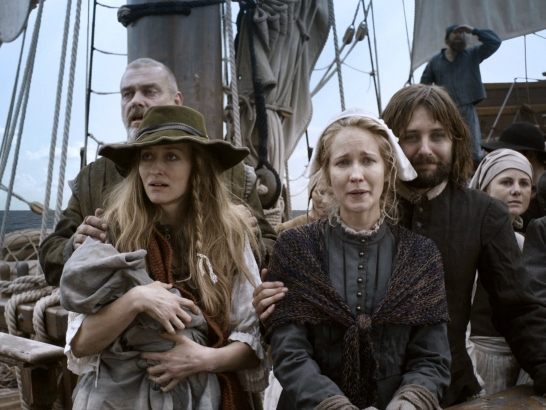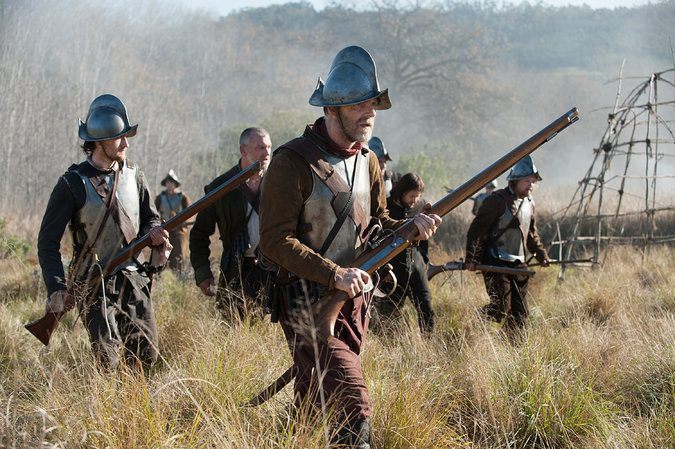Throughout much of your holiday tomorrow, the National Geographic Channel is running its two-part, four hour miniseries “Saints and Strangers,” a gritty docudrama that claims to tell the “real story” of the first Thanksgiving. After seeing the first two hours, although I’m not terribly familiar with this specific part of our history, I can say that this is neither your whitewashed grade school version of events, nor is it the politically correct, anti-Western European hate-fest we’ve come to expect from Hollywood.
The story opens on the iconic Mayflower, a supply vessel carrying 102 passengers from England to America in the winter of 1620. Conditions are awful. Some of the passengers truly are fleeing religious persecution, others are mercenary adventurers. Many die during the voyage. Conditions are appalling, and it seems unnecessarily important for the filmmakers to keep it real.
William Bradford (Vincent Kartheiser) leads the religious group. As conditions worsen and people die, his abiding faith and trust in God frequently clashes with his more commercial-minded, secular passengers. “Saints and Strangers” makes no secret of its disgust with blind faith. Whether you agree or disagree with this point of view, a major storytelling flaw is that the point is beaten into the ground.
Things only worsen for the colonists once the Mayflower survivors arrive on land. Nothing is as promised or dreamt of, and soon the clash will be among the religious themselves when it comes to dealing with the local “savages.”
Starving and desperate, the settlers debate looting what looks like a sacred Indian graveyard. Was the dried cord buried as a sacrament? Or was it buried for planting come Spring? Those who see the Indians as nothing more than animals don’t care. “God is blessing us,” is the rationale for the theft. “No, God is testing us,” is the measured response.
This dynamic drives the rest of the first chapter as a war of nerves develops between the settlers and the local tribes (who announce themselves with flying arrows). All of this is greatly complicated by a language barrier. To help the audience better relate to this difficulty, the Indians speak in their native tongue throughout (with subtitles) or though Squanto, a translator who eventually arrives and appears to have his own agenda — which adds a bit of real tension to a story in need of it.
We’re also given insight into the political dynamic within the various Indian tribes. They too deal with violent zealots who, due to their own prejudice and experiences, see only evil and disease in the white man. Moderating Indian voices barely keep the peace and do so sometimes at great personal cost.
“Saints and Strangers” is watchable but unexceptional. Interesting but never quite compelling. The acting and cinematography very much feel like a TV movie, which is surprising in this era of weekly television dramas that successfully aspire to theatrical quality.
Follow John Nolte on Twitter @NolteNC


COMMENTS
Please let us know if you're having issues with commenting.